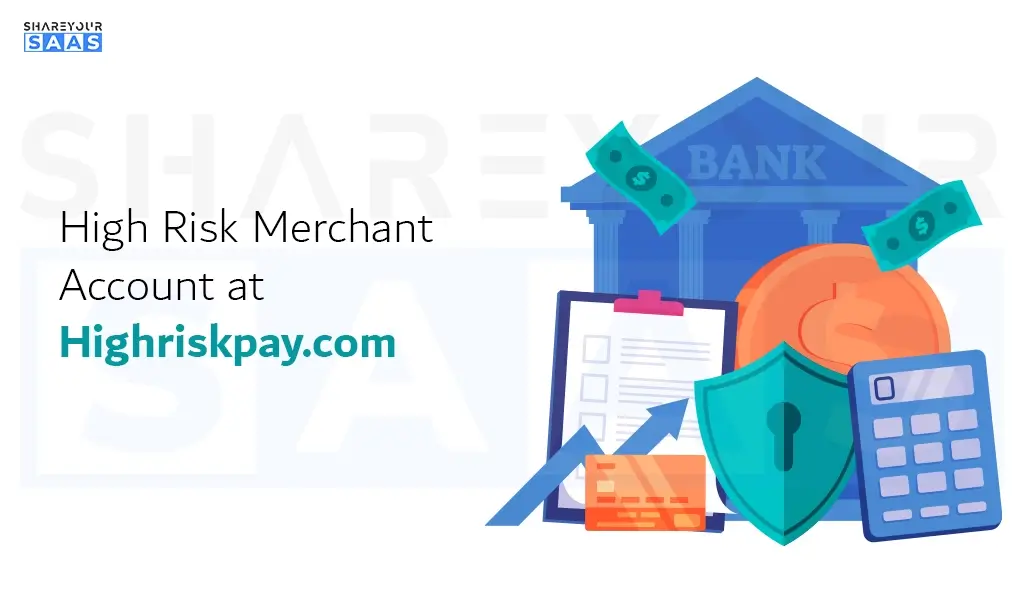Are you looking for a well-known and reliable payment gateway to process transactions from your customers? But you are having trouble, especially if you are a high-risk merchant. A payment gateway is a technical intermediary between a merchant and a payment processor. Then you must read about high risk merchant account at highriskpay.com.
This is a piece of software that transmits encrypted credit card data and transaction information from the merchant’s checkout to the payment processor, allowing online payments to be accepted and transactions to be processed securely. Similarly, a high-risk payment gateway is the same service, but the type that works with merchants who fall into a high-risk category. In some cases, payment gateways for high-risk businesses may have higher fees to offset the additional risk the payment processor takes on. But of course, in today’s near-cashless society, that’s better than the cost of not having a payment gateway at all.
Content
- What is a payment gateway and how does it work?
- Some benefits of a high risk trading account at Highriskpay.com
- Instant approval for high risk trading account
- Highriskpay.com services for high risk merchants of any credit history
- High risk trading account with competitive rates
- How to Know if Your Business is High Risk
What is a payment gateway and how does it work?
Discussing payment gateway solutions in simple terms will help you learn more about them for high-risk payments. You can accept debit card payments, credit card payments, and mobile payments. A payment processor is a company that operates and provides services to payment gateways.
The first step in this process is for the cardholder to make a purchase through your website or POS (Point-of-Sale) terminal. Payment gateways relay transaction information to , identifying which credit network service was used; cards include Mastercard, Visa, Discover, or American Express. The transaction is routed to the appropriate payment switch, which forwards the request to the issuing bank.
The issuing bank uses its fraud prevention protocols to determine whether the transaction is legitimate (for example, within a certain radius of your address or for a certain reasonable amount) and to ensure that your customer has enough credit or cash in the account to cover the purchase.
If everything checks out and is perfect, the issuing bank sends its approval back through the credit card network to the payment gateway and acquiring bank. In some cases, the merchant will need to negotiate the payment by adding a tip and then send a batch capture or clearing file for all authorized transactions.
Some benefits of a high risk trading account at Highriskpay.com
| Approval rate 99%! | No contract |
| No application fee | Fast approval within 24 hours |
| No setup fee | Bad credit history OK |
| Preventing chargebacks | Next day financing |
Instant approval for high risk trading account
The underwriting process for high-risk businesses can take longer than usual, typically in highly regulated industries. No worries: High Risk Pay account approvals typically take 24 to 48 hours. High Risk Pay offers customer-friendly solutions that allow customers to get account approvals immediately. It provides a 99% approval rate, meaning the business is almost guaranteed approval, and the customer can accept payments quickly and easily.
Highriskpay.com services for high risk merchants of any credit history
High Risk Merchant Accounts at highriskpay.com also create bad credit accounts. Their average approval rate is 99%, which is the highest in the industry. With a high risk merchant account, customers will get a bad credit account with fast approval and no setup or cancellation fees. It is very easy to apply online.
High risk trading account with competitive rates
A high-risk merchant account may have higher taxes and restrictions. Fees may vary by vendor and are largely dependent on the specific needs of the business. But at highriskpay.com, a high-risk merchant store, they do not penalize customers for engaging in a business that poses a higher risk of fraud or chargebacks.
With High Risk Pay, fees are similar to those of traditional card processors. In return, as a business owner, you get a variety of ways to accept credit and debit cards for transactions. You will enjoy serving your customers by making transactions as convenient as possible for them.
Additionally, while other high risk trading account providers may charge up to a hundred dollars for form filling and opening fees, high risk trader highriskpay.com does not charge any fees to open its own high risk trading account.
How to Know if Your Business is High Risk
Each payment processor, such as a bank or account service provider, defines its own standard for identifying a high-risk merchant account. Essentially, there are two factors to consider: your industry (some verticals should be more stable and secure than others) and your financial profile (credit history, past performance, etc.).
In addition, they also take into account how much control a business industry has at the national and state levels, as well as how saturated its market segment is with similar companies.
Here are the factors that payment processors typically use to determine whether a business is at high risk:
Fraud and Chargeback Rates
Companies with high chargeback or fraud rates are automatically classified as high risk by banks and payment processors. Companies with chargeback rates over 1% are generally considered high risk. Chargebacks can occur for any reason, from a customer forgetting to sign up to being billed without their consent.
Types of Products and Services
Various types of products, including software, seasonal items, tickets, etc., may be targeted at companies with unusual or inconsistent revenues. Payment processors consider this a very big red flag and a sign of financial uncertainty.
Reputational Risk
Companies that handle sensitive customer information may suffer reputational consequences. This applies to companies that serve the adult and technology sectors.
Recurring Payments
Certain business models with high levels of chargebacks or fraud can send a warning signal to payment processors. A common example is providers with recurring or subscription payments, which have a higher risk of chargebacks, account takeovers, and identity theft.
Monthly sales volume or transaction value
Financial institutions may consider a business high risk if it regularly accepts large transactions. B2B companies mostly have to deal with this factor.
Credit Rating
Banks are less likely to lend to individuals or businesses with a low credit rating, so if you have a low personal credit rating, your business may be considered a high risk.
Final View
As discussed earlier, the behind-the-scenes of a high-risk payment processor is not much different than the behind-the-scenes of a low-risk payment processor. The definition of “high risk” may vary between merchants and processors. It is important to note that while some payment processors have low barriers to entry, merchants face the risk of sudden shutdown at any time. Additional security protocols may include browser fingerprinting, IP blocking, historical card database checks, and email address matching.





